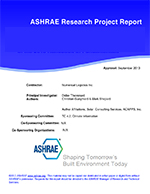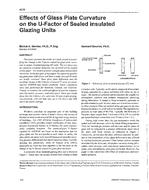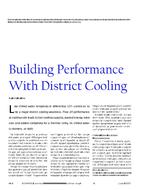Urgent measures are needed to combat worldwide climate change, including the development of efficient, cost-effective, low carbon, renewable heat sources. The current paper investigates a novel, low cost, solar thermal energy based system, namely a low-emissivity transpired solar collector. This consists of a metal, solar collector plate with a spectrally sensitive surface, and a large number of holes drilled into it, through which ambient air is drawn, into a plenum. The plenum air is then heated by convection from the collector plate, typically increasing its temperature by 15-20 K (27-36°R). The heated air is continually extracted from the plenum and can be used, for example, for space heating or for pre-heating hot water for buildings. This can be achieved either directly by using the solar heated air in ventilation heating systems, or heat exchangers can be used to transfer the heat generated by the solar collector to other air or water circulation systems, thereby combining the solar heat with that from gas, electric heaters or heat pumps. The novel solar heated collector considered in the present study could be used in the form of cladding attached to a vertical building wall. Advantages are that it is: (i) thermally efficient, achieving a significant increase in temperature from a relatively small area, even in winter; (ii) a low/zero carbon renewable heating source; (iii) low cost (in terms of both capital and operating costs), requiring only a low powered fan to force air through the solar collector plate; (iv) readily combined with other heating systems, such as heat pumps.
The current paper investigates the use of the solar collector integrated with other heating systems in a number of configurations, enabling it to meet the heating demand for a range of building types. Its effectiveness in the different configurations was evaluated and compared using models to investigate the various heat transfer steps involved and estimate the heat delivered by each system for a range of applications. In each case, the energy, carbon and cost savings achieved when using the solar collector are compared to those for a conventional (fossil fuel based) heating system. The results from these analyses together with recommendations for further development and future use of the solar collector integrated with other heating systems are reported.
Citation: 2020 Winter Conference, Orlando, FL Conference Papers
Product Details
- Published:
- 2020
- Number of Pages:
- 9
- Units of Measure:
- Dual
- File Size:
- 1 file , 1.1 MB
- Product Code(s):
- D-OR-20-C005


